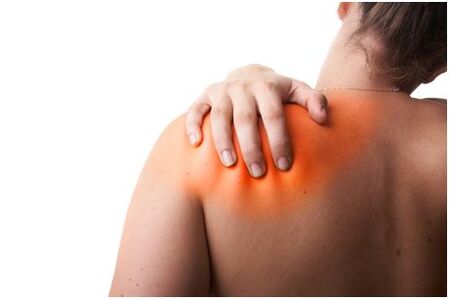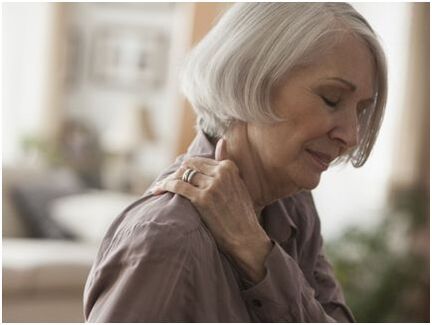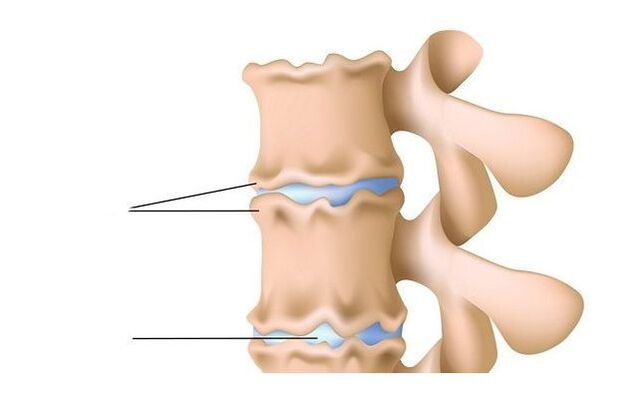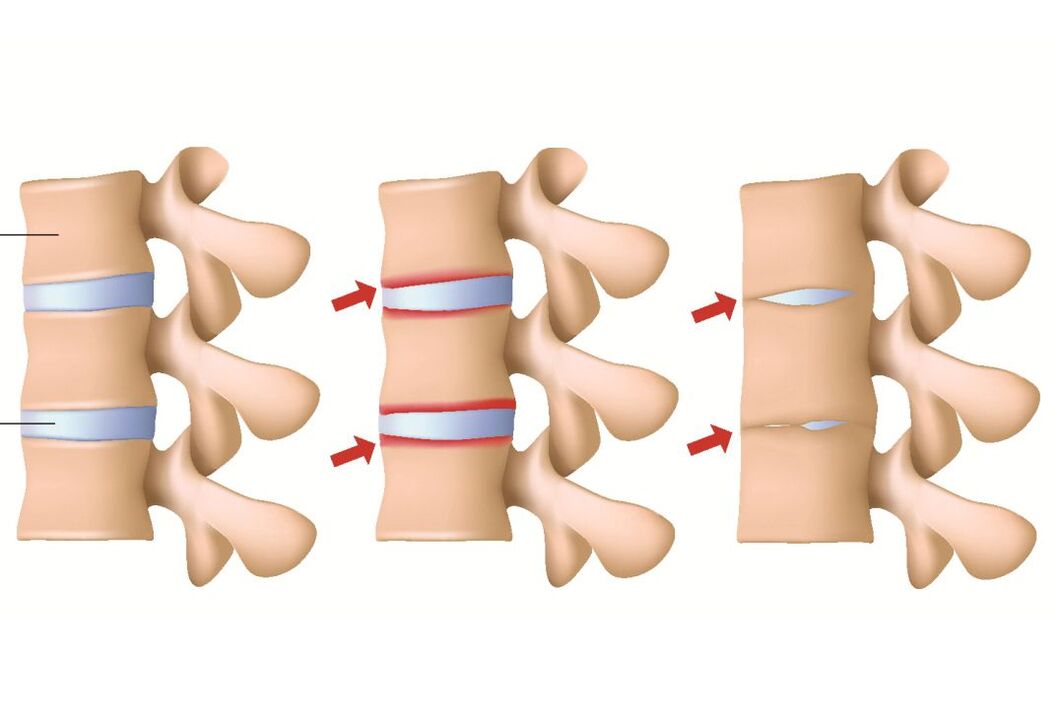
Back pain comes in many forms and types. Location and nature of pain, duration, presence or absence of radiation to other parts of the body, provoking factors - all this can be combined in various combinations.Back pain in the shoulder blade area- common type of pain in various diseases.
The main causes of pain in the shoulder blades and back
Why does my back hurt in the shoulder blade area?Such symptoms can be observed in diseases of the spine, neurological disorders, pathologies of muscles and other organs. These include lung and heart diseases, diseases of the gastrointestinal tract, as well as pain during radicular syndromes, trauma and osteochondrosis. Let's consider in more detail the common causes of pain in the back and shoulder blades.
Injuries
Scapula injuries occur in two ways - with direct impact (impact, fall) and indirect, with loads along the axis of the upper limb (fall on the elbow, sharp contraction of the muscles of the shoulder girdle). In the first case, simultaneous damage to the spine and rib fractures are possible. Such injuries occur in 50% of serious traffic accidents. Severe pain, limited mobility, and severe swelling of the tissues around the shoulder blade can also be seen with severe bruising.
Osteochondrosis
Osteochondrosis is a common causeback painAndspineany localization as wellshoulder blade area. Degenerative-dystrophic processes in the intervertebral joints and discs as a result of nutrition and cartilage regeneration lead to the formation of protrusions and tears, spasm of the back muscles, and a decrease in the height of the intervertebral discs. Spinal nerves can be compressed, the pain can be caused by radicular syndrome.

Pain is provoked by bending or turning the body, lifting weights. Due to the accompanying inflammation of the back muscles, pain may increase when lifting and running the arms. Possible stiffness of the spine, bending, forced position of the patient with a slight forward bend. The pain is painful, burning, and may involve the chest. Some patients describe it as feeling like something is stuck between their shoulder blades.
Scoliosis
Scoliosis is a disease in which the pathological S-shaped curvature of the spine occurs mainly in the coronary plane. As a result, the normal distribution of loads and biomechanics are disturbed. Predisposing factors for scoliosis are incorrect posture, weak back muscles, childhood and improper organization of the workplace. Back pain due to scoliosis is usually caused by spasm, inflammation, and tension in the muscles that are unable to support and stabilize the weakened spine.
Scoliosis is characterized by aching pain that disappears when lying down and worsens when standing for a long time.
Kyphosis
Kyphosis is a pathological curvature of the spine in the sagittal plane, most often occurs in the chest area. As a result of kyphosis, the spine begins to look like a "? " question mark and a hump may begin to form. Predisposing factors for kyphosis are vitamin D deficiency, osteoporosis and poor posture. Kyphosis can be caused by spinal trauma or tuberculosis. Ankylosing spondylitis causes excessive kyphosis of the thoracic region.
Pain with kyphosis, as with scoliosis, is caused by tension and muscle spasm due to excessive stress. It is felt at the same timeback muscle painand in the regionshoulder blades
Spondyloarthrosis, spondyloarthrosis
Spondyloarthrosis is degenerative-dystrophic changes in the intervertebral joints as a result of malnutrition of the articular cartilage, which leads to the gradual destruction of the joints of the spine. Spondyloarthritis is an inflammation of the intervertebral joints that occurs in response to an autoimmune or reactive process (rheumatoid arthritis, ankylosing spondylitis, reactive arthritis). The result of both processes is ankylosis or fusion of the intervertebral joints, which leads to impaired mobility of the spine. The difference is that in the first case, the inflammation is secondary in nature and occurs in response to the destruction of the joints, while in the second case, the primary inflammation leads to degenerative-dystrophic changes.
Pain during spondyloarthrosis and spondyloarthrosis is painful in nature and intensifies at night. A characteristic symptom is stiffness and stiffness of the spine in the morning, which disappears after gymnastics or physical activity. The course of the disease is characterized by chronic, fluctuating, periods of exacerbation and improvement. Pain can be localized not only between the shoulder blades, but throughout the spine.
Protrusion and rupture

Protrusions and tears of intervertebral discs are the result of advanced osteochondrosis of the spine. The intervertebral disc, which has lost its elasticity and elasticity, or rather its peripheral part, called the annulus fibrosus, protrudes under the influence of loads and forms a protrusion. If the annulus fibrosus ruptures, the internal contents of the disc fall out and form a herniated disc. Both protrusions and herniated intervertebral discs can cause compression of the spinal cord exiting the intervertebral foramina. Acute pain, protective tension and muscle spasm occur. The pain can spread to the shoulder, elbow, forearm, and is often localized in the area of the shoulder blades (with a hernia or protrusion in the thoracic spine).
Radiculitis
Sharp pain starting in the interscapular region and continuing along the intercostal spaces is the most common symptom of radiculitis. It is caused by spinal nerves being compressed by a herniated or bulging intervertebral disc. Less commonly, sciatica can be caused by a tumor, spondylosis, or displacement of a vertebra. A characteristic symptom of the disease is pain in the thoracic spine caused by movements and lifting heavy objects.
Humeroscapular periarthrosis
Humeroscapular periarthrosis is a disease accompanied by pain in the shoulder and back area caused by arthrosis of the shoulder joint and inflammation of the surrounding soft tissues. Predisposing factors include injuries and microtraumas of the shoulder joint, intensive physical activity in athletes and workers, osteochondrosis of the cervical cervicothoracic spine. Humeral periarthrosis is the most common cause of acute pain in the shoulder blades and shoulder joint.

The pain occurs gradually, intensifies from episodic pain during physical activity, a wide range of motion in the shoulder joint (swinging the arm, throwing, when putting the arm behind the back). Then the pain becomes constant, even at rest. Therefore, the patient cannot sleep on the affected side.In painshoulder andreturns to the shoulder blade. Possible shooting pains when moving. It is characterized by a sharp restriction of mobility in the shoulder joint, the patient cannot raise or abduct the arm.
Neuralgia
Aching pain in the area of the shoulder blades, spreading along the intercostal nerves, is a symptom of neuralgia, a chronic neurological disease. A characteristic symptom is increased pain when coughing, sneezing or moving - the pain is sharp, shooting. The cause of the disease is irritation of the roots of the spinal cord due to diseases of the spine, spondyloarthritis and spondyloarthrosis, muscle inflammation. Exacerbation can be provoked by drafts, hypothermia and physical activity.
Heart diseases
Heart pathologies are often accompanied by severe pain in the region of the left shoulder blade. The cause of pain syndrome can be angina pectoris, coronary heart disease, atherosclerosis of coronary arteries. Acute severe pain under the left shoulder blade that does not last for a long time is a sign of myocardial ischemia or heart attack. The nature of the pain is different - aching, constant, sharp, with burning pain in the left shoulder and forearm, in the left neck. A characteristic symptom is the relief of pain with nitrates (medicines for the treatment of heart failure) - nitroglycerin, isoket, nitrosorbide.
Problems of the gastrointestinal tract
Diseases of the gastrointestinal tract are a common cause of back pain in the shoulder blade region. Pain is reflective in nature and occurs due to the return of part of the pain impulses from the solar plexus and receptors of the gastrointestinal tract to the spinal cord. Pain in the area of the shoulder blades can occur with hiatal hernia, chronic or acute pancreatitis, gastric ulcer and duodenal ulcer. For cholecystitis and gallstonespainlocalizedbehind between the shoulder blades, moreon the right.
Lung diseases
Pain in the shoulder blades can occur with a number of diseases of the lungs and bronchi. Often these are pneumonia, acute bronchitis, asthma and other pathologies. Often patients with lung cancerback pain in the area of the shoulder blades.
Back pain areas in the area of the shoulder blades
Pain in the region of the shoulder blades during inhalation or exhalation is a characteristic symptom of intercostal neuralgia, spinal osteochondrosis with protrusion or rupture of the intervertebral disc, inflammation of the back muscles, and radiculitis. The reason for the pain is that the act of breathing is ensured by the coordinated contraction of a large number of muscles, and even such volume movements can cause increased pain in the above diseases.
Pain in the sternum and shoulder blades
Pain in the sternum and shoulder blades is often observed with glenohumeral periarthrosis. Inflammatory and degenerative-dystrophic changes in the shoulder joint disrupt the normal distribution of loads, so pathological changes begin at the point of attachment of the clavicle and ribs to the sternum (Tietze syndrome).
Pain in the sternum and shoulder blades also occurs with lung and heart diseases.
Pain in the right or left shoulder blade
Pain in the shoulder blade on the left side, as mentioned above, can be reflected in heart disease. Pain in the right shoulder blade is characteristic of acute or chronic cholecystitis, gallstones.
Pain in the shoulder blades and neck
Back pain,shoulder blades and neck areapossible with osteochondrosis of the neck and thoracic spine. This symptom is also characteristic of a hernia or protrusion. The pain referred to in the neck and shoulder blade is observed in some diseases of the heart and lungs (angina pectoris, lung cancer, pneumonia).
Types of pain in the shoulder blades
Aching pain in the shoulder blade
Painful pain in the shoulder blade on the left is observed with heart disease, on the right - diseases of the biliary tract, cholelithiasis. Painful pain is accompanied by glenohumeral periarthrosis, neuralgia and radicular radiculitis. With spondyloarthrosis and spondyloarthrosis, painful pain in the area of the back and shoulder blades is also possible.

Pressing pain in the shoulder blade
Pressing pain in the shoulder blade is characteristic of myositis or inflammatory muscle diseases. The shoulder blades are surrounded by a number of muscles, their inflammation causes not only pain, but also limited mobility of the shoulder girdle. Severe inflammation of the soft tissues and ligaments of the shoulder joint can also be accompanied by pain.
Dull pain when breathing
Dull pain in the back and shoulder blades aggravated by inhalation can be observed with pneumonia, lung cancer, neuromuscular pathologies and myositis. This symptom is also a sign of injury, back bruises and soft tissue hematoma. Dull pain in the back and shoulder blades is accompanied by some diseases of the spinal cord, for example, multiple sclerosis.
Throbbing pain in shoulder blade
A throbbing pain in the scapula that worsens with movement, sneezing, and coughing is a sign of injury, fractures, or cracks in the spine. The mechanism of injury is most often a direct physical impact or an indirect impact transmitted along the axis of the upper limbs, for example, when falling on the elbow.
Pain in the shoulder blades when moving (walking).
Pain in the shoulder blades when walking can occur with tears and protrusions of the thoracic spine. Axial loads on the spine, which occur when moving and hitting the ground with the heel, are transferred to the diseased intervertebral disc and cause pain.
Burning in the area of the shoulder blades
A burning sensation in the area of the shoulder blades is a possible sign of an acute myocardial infarction. Myocardial ischemia (lack of blood circulation and lack of oxygen in the heart muscle) is accompanied by severe pain, painful shock and a decrease in blood pressure. However, if the posterolateral wall of the left ventricle and the septum of the heart are damaged, the pain can mimic spinal osteochondrosis, poor-quality food poisoning, acute surgical pathology, and many other diseases.
Burning and tingling in the skin in the interscapular region may be a sign of a rupture or protrusion of the intervertebral discs of the thoracic and cervical vertebrae. This symptom occurs in multiple sclerosis and other diseases of the spinal cord.
Shoulder pain and nausea
Pain in the left shoulder blade accompanied by nausea and vomiting may also indicate an acute myocardial infarction. Similar symptoms are characteristic of acute cholecystitis, gallstones, obstructive jaundice (clogging of the lumen of the bile duct with a stone) - the pain is more localized on the right, nausea is caused by intoxication.
How to relieve pain in the shoulder blades
For diseases of the spine and many other diseases, pain relief is facilitated by rest and bed rest. An effective way to combat pain is to prescribe analgesics, mainly non-steroidal anti-inflammatory drugs. In some cases, dry heat, distractions, and anti-inflammatory agents in the form of ointments and gels on the skin help. Patches with anti-inflammatory drugs are widely used, their effect is limited to the area of application, and they are not accompanied by significant side effects.

It is important to remember that any pain is an indication to consult a doctor. The reason is that long-term use of analgesics increases the risk of serious and dangerous complications. Therefore, their use as medical aid is aimed at relieving pain before consulting a doctor. After determining the cause, treatment is adjusted taking into account the diagnosis and individual characteristics of the patient.
How is pain in the shoulder blades diagnosed?
To determine the causes of pain in the shoulder blades, a clinical examination by a doctor is used, which allows to identify mild symptoms and signs characteristic of a particular disease. Studying skin sensitivity, checking reflexes, evaluating the range of motion in the shoulder joint and spine, etc. Instrumental methods such as ECG, ultrasound, CT or MRI are used to confirm the diagnosis.

Magnetic resonance imaging is a universal method for diagnosing the causes of back pain associated with pathologies of the spine, spinal cord, joints and soft tissues. The procedure is safe, highly accurate and allows obtaining detailed images of the area of interest. The method is based on the physical phenomenon of magnetic resonance created using only magnetic fields and radio waves that are safe for human health.
Shoulder blade pain treatment
Treatment of pain in the back and shoulder blades is focused on the cause of the disease (etiotropic treatment), mechanisms of its occurrence (pathogenetic treatment) and symptoms (symptomatic treatment). The treatment plan depends on the patient's diagnosis and condition. As an example, consider the treatment plan for spinal osteochondrosis.
Chondroprotectors, vitamin therapy, drugs that improve blood microcirculation, therapeutic exercises and physiotherapy are prescribed to eliminate degenerative-dystrophic phenomena and improve nutrition of the soft tissues of the spine. Massage and muscle relaxants are prescribed to relieve tension in the back muscles. When the torn spinal nerve is compressed, physical influence is used - underwater traction, manual therapy. Analgesics are prescribed to combat pain.
Treat shoulder blade pain at home
Treatment at home is possible only if the patient consults a doctor, undergoes an examination and an accurate diagnosis is made. In most cases, the causes of pain in the shoulder blade and back do not require immediate hospitalization, the treatment is carried out at home according to the doctor's instructions. But more often the opposite happens - patients try to get treatment at home, self-diagnose and use painkillers without control. The result of self-diagnosis and self-treatment is chronic pain and side effects of analgesics. When the disease causes complications, patients often turn to the doctor late. In case of serious diseases, late treatment significantly worsens the prognosis and reduces the possibility of complete recovery. That is why any back pain requires careful diagnosis and consultation with a doctor.
Which doctor should I see for pain in the shoulder blades?

By clarifyingcauses and treatment of pain in shoulder blades and backit is managed by a neurologist, because in most cases the pain syndrome is of neurogenic origin. These are almost all spine, spinal cord and peripheral nerve diseases. A traumatologist deals with spinal injuries, but if there are neurological symptoms in this case, a neurologist's consultation is required. In extreme cases, if you have back pain, you should at least contact a therapist so that he can make a preliminary diagnosis and refer the patient to another specialist for consultation. The worst thing is that if the patient does not consult a doctor and treats himself - the consequences of such "treatment" lead to complications, chronicity of the disease, and in some cases pose a threat to human health and life.

















































